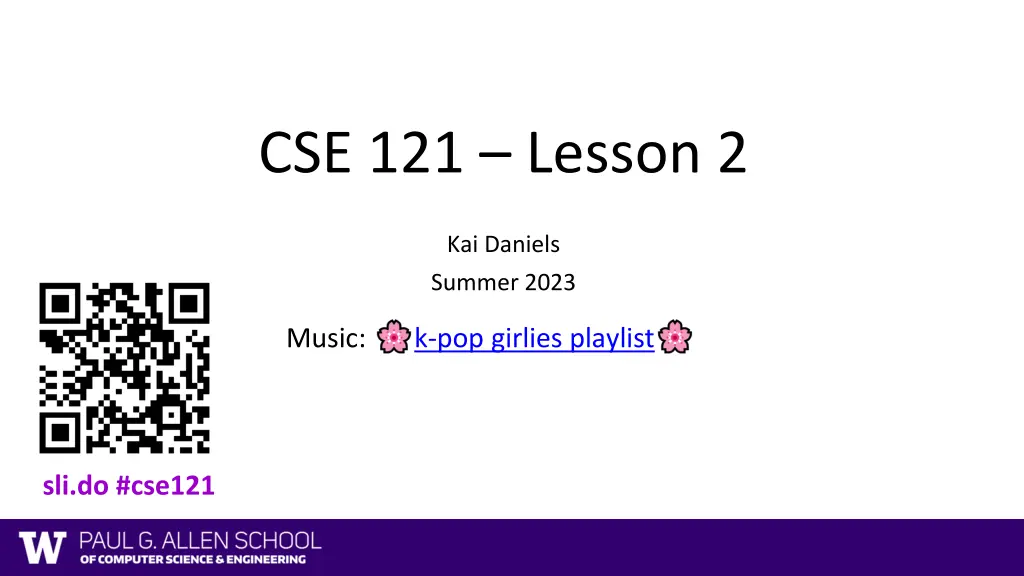
Working with Strings and Characters in Java Programming
Learn about handling strings and characters in Java programming, covering topics such as data types, operators, string methods, and practical examples. Enhance your Java skills with this comprehensive guide.
Download Presentation

Please find below an Image/Link to download the presentation.
The content on the website is provided AS IS for your information and personal use only. It may not be sold, licensed, or shared on other websites without obtaining consent from the author. If you encounter any issues during the download, it is possible that the publisher has removed the file from their server.
You are allowed to download the files provided on this website for personal or commercial use, subject to the condition that they are used lawfully. All files are the property of their respective owners.
The content on the website is provided AS IS for your information and personal use only. It may not be sold, licensed, or shared on other websites without obtaining consent from the author.
E N D
Presentation Transcript
CSE 121 Lesson 2 Kai Daniels Summer 2023 Music: k-pop girlies playlist sli.do #cse121
Announcements, Reminders Programming Assignment 0: Code Reviews was released Wed, due next Wed July 5th11:59 PM Creative Project 0 feedback released next Tues, July 4 Quiz 0: Monday, July 10 (take-home) Resubmission start next week, more on that later 2
Last Time Expressions Data types (int, double, boolean, String) Operators (+, -, /, *, %) Logical Operators (!, &&, ||, ==, !=, >, >=, <, <=) // declare AND initialize int version = 5; Variables Container that stores a specific data type Must declare & initialize! Manipulate, modify, reuse 3
(PCM) Strings and chars String = sequence of characters treated as one, yet can be indexed to get individual parts Zero-based indexing g u m b a l l 0 1 2 3 4 5 6 Side note: new data type! char, represents a single character, so we use single quotes Strings are made up of chars! 4
(PCM) String Methods Usage: <string variable>.<method>( ) Method Description Returns the length of the string. length() Returns the character at index i of the string charAt(i) Returns the index of the first occurrence of s in the string; returns - 1 if s doesn't appear in the string indexOf(s) Returns the characters in this string from i (inclusive) to j (exclusive); if j is omitted, goes until the end of the string substring(i, j) or substring(i) Returns whether or not the string contains s contains(s) Returns whether or not the string is equal to s (case-sensitive) equals(s) Returns whether or not the string is equal to s ignoring case equalsIgnoreCase(s) Returns an uppercase version of the string toUpperCase() Returns a lowercase version of the string toLowerCase() 5
Poll in with your answer! Suppose s contains the String "bubble gum". Which option below would result in s containing "Gumball" instead? A.s.substring(7) + "ball"; B.s = s.substring(7, 9) + "ball"; C.s = s.charAt(7).toUpperCase() + "ball"; String s = bubble gum ; D.s = b u b b l e g u m s.substring(7, 8).toUpperCase() + s.substring(8) + "ball"; 0 1 2 3 4 5 6 7 8 9 E.s = s.substring(7, 8).toUpperCase() + s.substring(7, 10) + "ball"; 6
(PCM) for loops! For loops are our first control structure A syntactic structure that controls the execution of other statements. 7
(PCM) for loops! for (int counter = 1; counter <= 5; counter++) { System.out.println("I love CSE 121!"); } 8
Poll in with your answer! What output does the following code produce? A. B. C. D. 10
(PCM) String traversals // For some String s for (int i = 0; i < s.length(); i++) { // do something with s.charAt(i) } 11
Fencepost Pattern Some task where one piece is repeated n times, and another piece is repeated n-1 times and they alternate g-u-m-b-a-l-l 12
Fencepost Pattern Some task where one piece is repeated n times, and another piece is repeated n-1 times and they alternate g-u-m-b-a-l-l 13
